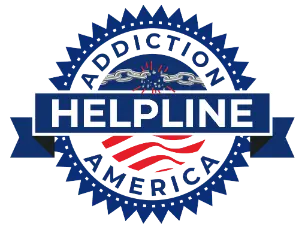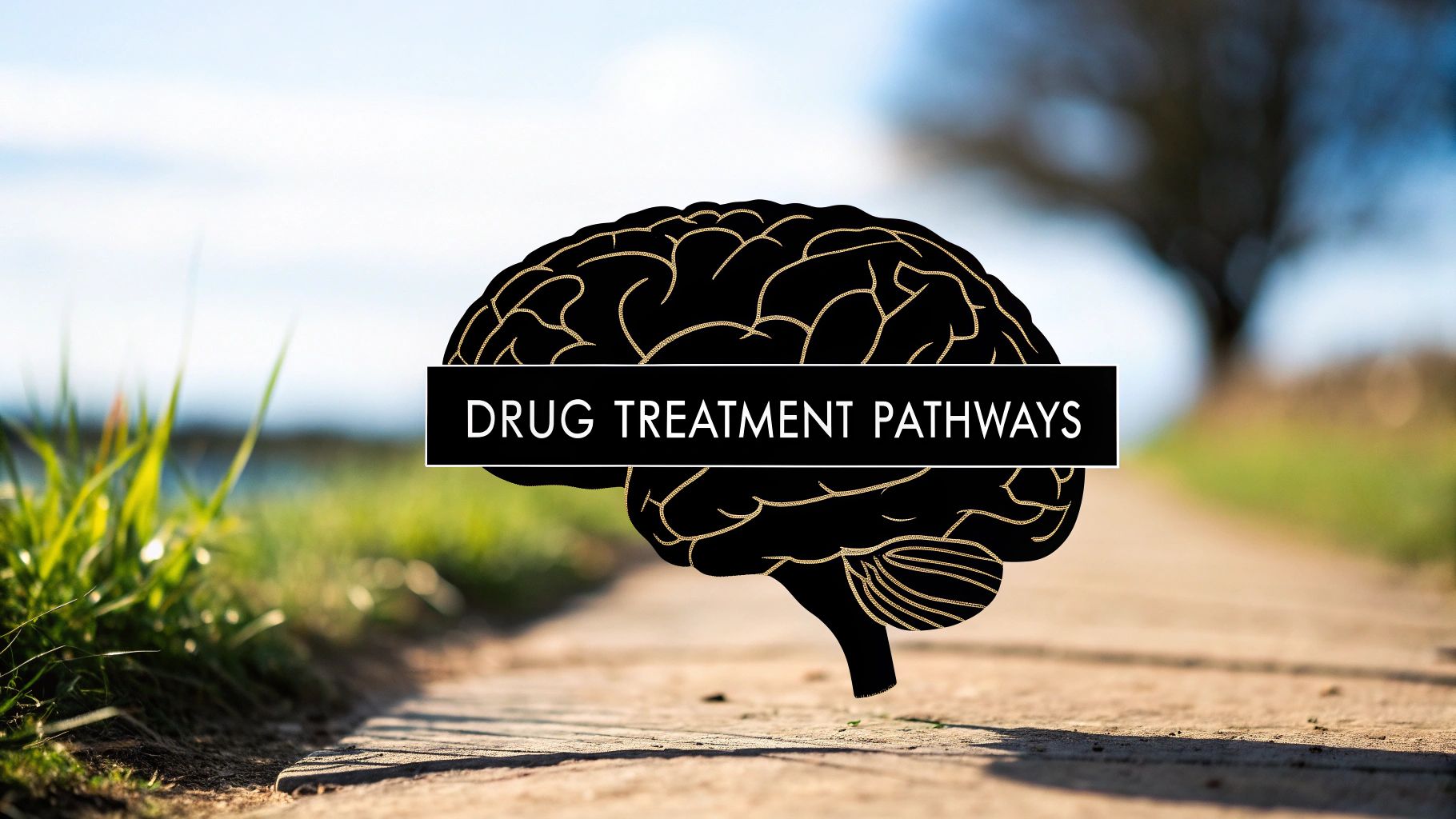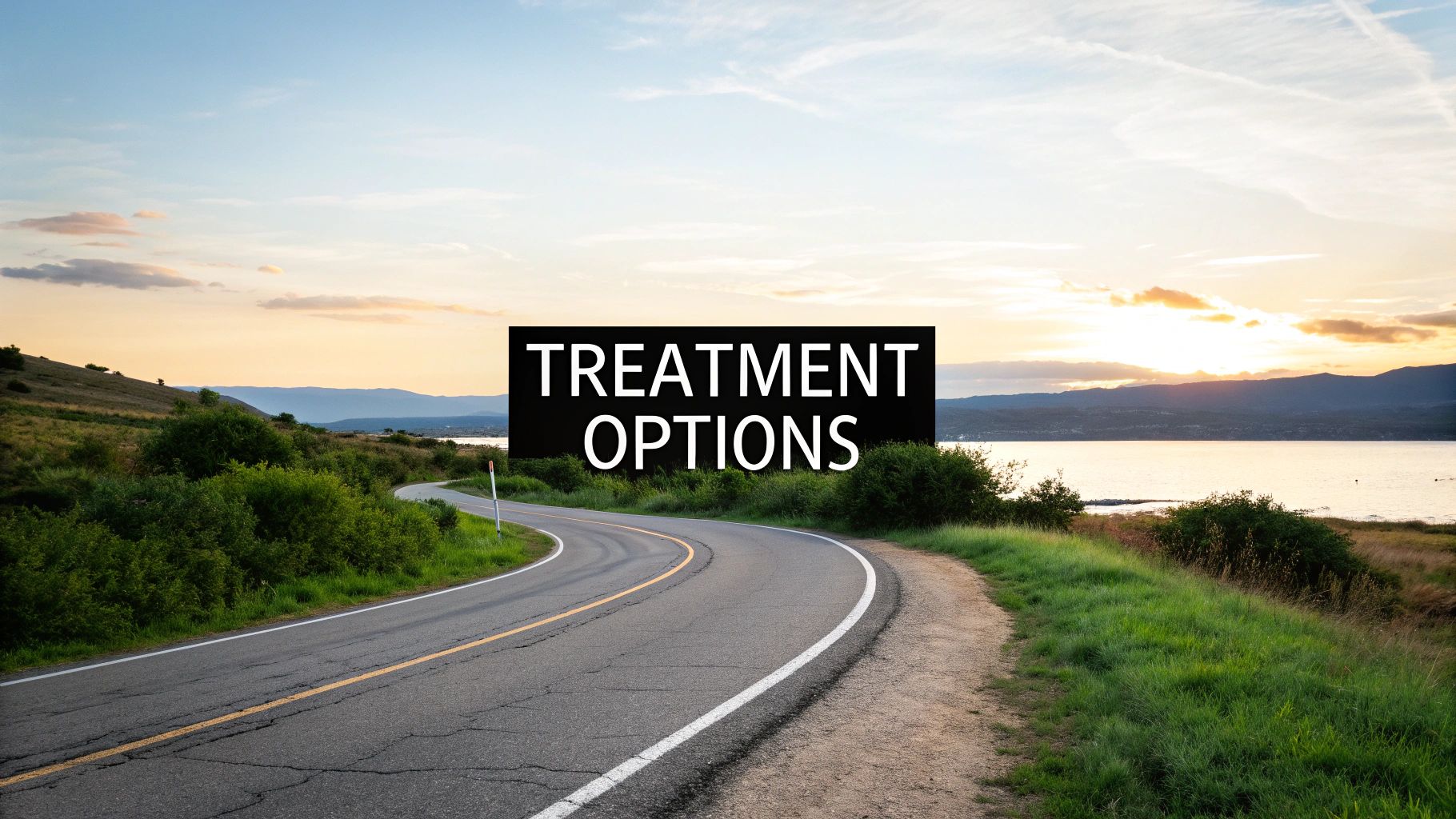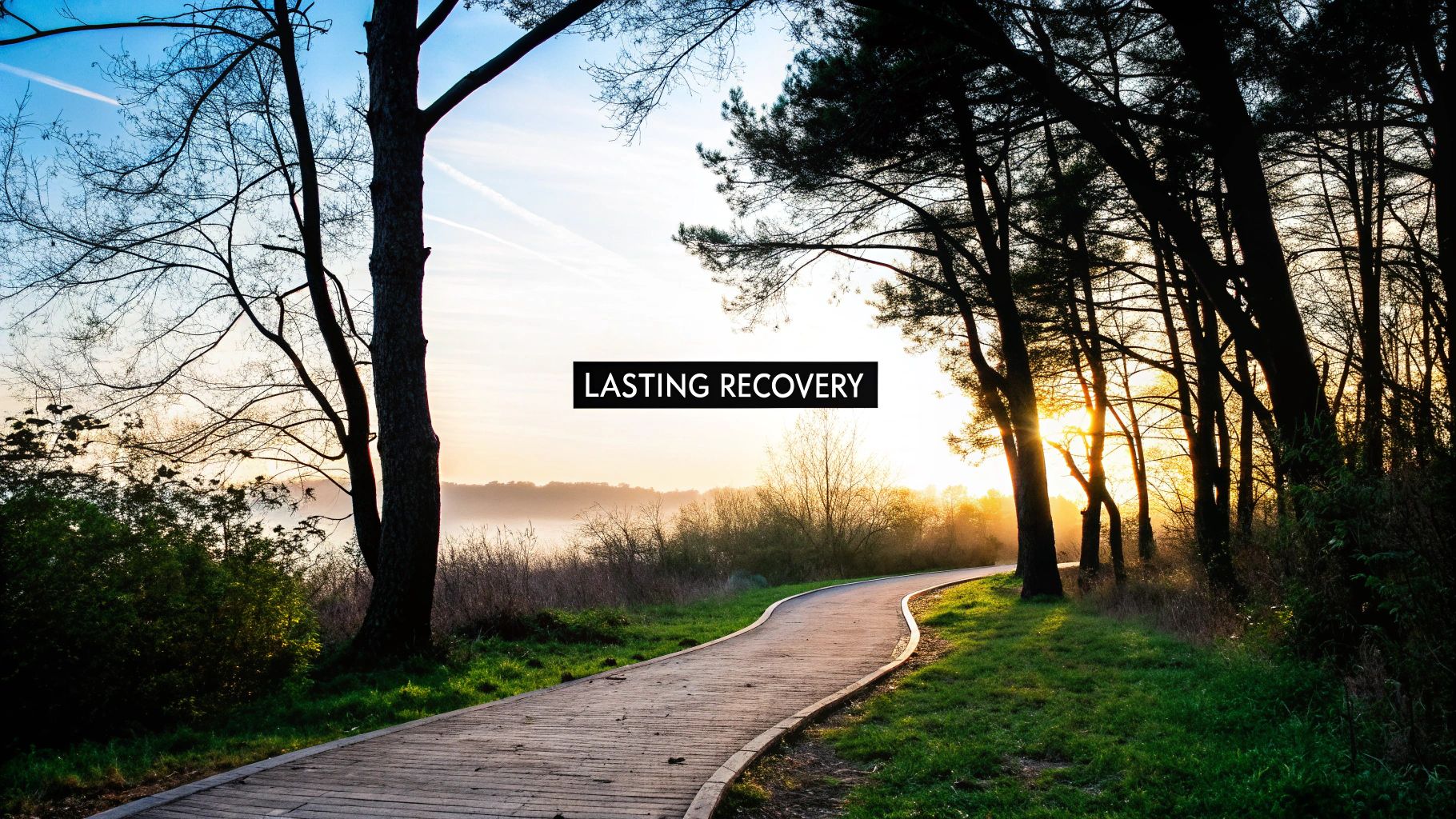
Why Men Face Unique Challenges in Addiction Recovery
Men’s inpatient rehab provides specialized treatment that addresses the distinct ways addiction affects men. Research shows men are more likely to visit emergency rooms for drug use, have higher overdose death rates, and face unique barriers when seeking help.
Quick Facts About Men’s Inpatient Rehab:
- What it is: 24/7 residential treatment programs designed for men.
- Duration: Typically 30, 60, or 90+ days, based on individual needs.
- Key benefits: Gender-specific therapy, fewer distractions, and peer accountability.
- Common treatments: Individual and group therapy, medical detox, and life skills training.
- Cost: Often covered by insurance, with financial assistance available.
Men often struggle with societal expectations that discourage seeking help, teaching them to be strong, independent, and emotionally reserved. This creates shame around admitting vulnerability.
The numbers tell a stark story. Men are 2 to 3 times more likely than women to develop drug dependence. They consume alcohol at higher rates and are more likely to inject heroin. Many suffer in silence, viewing treatment as weakness rather than strength.
“You don’t have to see the whole staircase, just take the first step,” as Martin Luther King Jr. once said. Recovery begins by acknowledging that addiction is a treatable disease, not a moral failing.
At Addiction Helpline America, our experienced team has guided countless men to the right men’s inpatient rehab programs for their unique needs. We understand this first step requires courage, and we’re here to provide the compassionate, confidential support you need to begin healing.
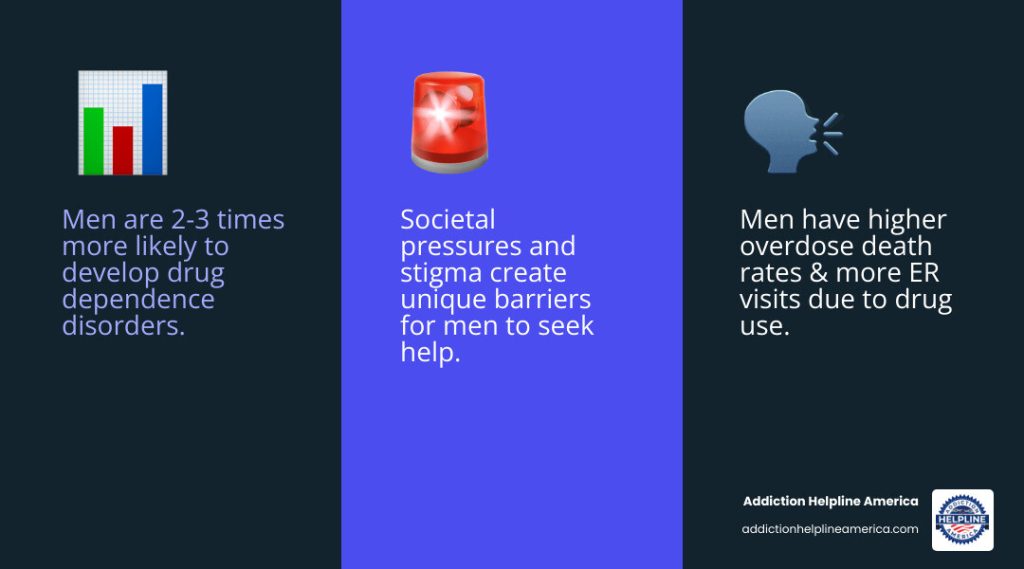
Understanding Men’s Inpatient Rehab and Its Unique Advantages
Men’s inpatient rehab is a residential program where you live at a facility full-time, receiving comprehensive addiction care. It’s a reset button for your life, providing 24/7 structured support, medical supervision, and a safe environment removed from the triggers of your daily life.
This change of scenery allows you to focus entirely on one thing: getting your life back. You’re free from work stress, relationship drama, and friends who enable your substance use.
Men face unique challenges in recovery. Society often teaches us that asking for help is a sign of weakness, creating a perfect storm of peer pressure, difficulty expressing emotions, and stigma around seeking treatment. The truth is, admitting you need help takes more courage than suffering in silence.
In a men-only program, the benefits become clear. With reduced distractions from mixed-gender dynamics, men find genuine camaraderie and feel more comfortable with open communication.
According to the Substance Abuse and Mental Health Services Administration (SAMHSA), SUDs affect people from all backgrounds, and specialized care for men can significantly improve recovery outcomes.

Why a Men-Only Program Can Be More Effective
In a men-only environment, treatment can focus on male-specific issues like career pressures, anger management, and fatherhood challenges. These programs foster trust among men with similar life experiences, turning shared struggles into powerful tools for healing. This creates a genuine safe space for vulnerability, free from judgment or the need to maintain a tough-guy image.
Common Substances and Issues Addressed
Men’s inpatient rehab is equipped to handle a full spectrum of substance use disorders. Alcohol use disorder is common, as men have higher rates of alcohol consumption and binge drinking. Opioid addiction (including prescription painkillers, heroin, and fentanyl) is another major focus, along with misuse of prescription drugs like benzodiazepines.
Addiction to stimulants like cocaine and methamphetamine also disproportionately affects men. However, effective treatment goes beyond the substance itself.
Co-occurring disorders like trauma, anxiety, depression, and PTSD are incredibly common, as many men self-medicate their pain. The best programs treat the whole person, not just the addiction. They understand that lasting recovery means addressing the “why” behind substance use through integrated care that addresses both addiction and mental health simultaneously.
The Journey Begins: What to Expect During Treatment
Choosing men’s inpatient rehab is a brave decision to step away from a chaotic environment and focus completely on your recovery. The structured setting removes daily stresses and temptations, making healing your only job.
The Intake and Evaluation Process
Your journey starts with a confidential phone call to a professional team like ours at Addiction Helpline America. This pressure-free conversation helps you understand your options.
If you move forward, the intake process involves a thorough evaluation. A clinical team will review your medical history, substance use patterns, and conduct a mental health assessment. This isn’t about judgment; it’s about creating a personalized treatment plan that addresses your specific needs.
Before you arrive, the staff will guide you on what to pack (comfortable clothing, toiletries) and what to leave at home (triggers, disruptive items). This preparation helps you settle in and focus on healing from day one.

A Typical Day in a Men’s Inpatient Rehab Program
Structure and routine are your allies in recovery. A predictable schedule provides comfort after years of chaos, with each day designed to build healthy habits. A typical day might look like this:
- Morning: A nutritious breakfast followed by meditation or yoga to center your mind for the day’s therapeutic work.
- Late Morning/Early Afternoon: The core of your day, focused on group therapy sessions with peers and individual counseling with your therapist.
- Afternoon: Activities like skill-building workshops (e.g., anger management), recreational therapy, and fitness time to help rebuild your physical and mental strength.
- Evening: 12-step meetings or other support groups, followed by structured downtime for reflection, reading, or connecting with peers.
This consistent routine removes overwhelming decisions, allowing you to focus entirely on the work of getting better.
Core Treatments and Therapies Custom for Men
Effective men’s inpatient rehab programs combine evidence-based practices with holistic approaches to treat the whole person, not just the addiction. Lasting recovery means addressing the root causes of substance use.
Therapeutic Modalities in Men’s Inpatient Rehab
The best programs offer a variety of therapies adapted to how men communicate and process emotions.
- Cognitive Behavioral Therapy (CBT): Cognitive Behavioral Therapy (CBT) is a highly-effective treatment method that helps you identify and change negative thought patterns driving substance use. It challenges rigid beliefs about masculinity, reframing emotional expression as a sign of strength.
- Dialectical Behavior Therapy (DBT): This therapy teaches practical skills for managing intense emotions without turning to substances, offering concrete tools for when life feels overwhelming.
- Motivational Interviewing: This collaborative method helps you find your own internal motivation for getting sober, which often resonates better with men who feel defensive about their addiction.
- Group and Family Therapy: Group therapy in a men-only setting is transformative, creating a space for honest sharing. Family therapy helps repair damaged relationships and teaches loved ones how to support recovery effectively.
- Trauma-Informed Care: Many men carry invisible wounds from their past. Counselors trained in trauma understand how these experiences can drive substance use and address them in a safe, supportive manner.
- Experiential Therapies: These therapies offer healing through action. Adventure therapy (e.g., rock climbing) builds confidence, while art therapy or equine therapy provides non-verbal ways to process emotions and build trust.

Addressing Co-Occurring Mental Health Disorders
Addiction rarely travels alone. Most men in rehab also deal with mental health challenges like anxiety, depression, PTSD, or bipolar disorder. This is known as a dual diagnosis.
Men are often taught to “tough out” emotional struggles, leading them to self-medicate with drugs or alcohol. An integrated treatment approach addresses both addiction and mental health together.
Psychiatry services and medication management provide access to medical professionals who can diagnose underlying conditions and determine if medication can help the brain heal. Therapy sessions focus on how these conditions interact, teaching you healthy coping strategies for long-term wellness. Treating both issues at once gives men the best chance at lasting recovery.
Navigating the Logistics: Program Length, Costs, and Insurance
Planning for men’s inpatient rehab involves decisions about time and money. Understanding your options can remove barriers to getting the help you need. Investing in recovery is an investment in your future.
How Long Does Inpatient Rehab Last for Men?
The length of your stay depends on your unique situation. As the surgeon general notes, everyone has a unique journey to healing, and your treatment should reflect that.
- 30-Day Programs: A solid foundation for recovery, ideal for first-time treatment or less severe addiction.
- 60-Day Programs: Allows more time to dig deeper into therapy and address underlying issues like trauma.
- 90-Day Programs: Often considered the gold standard, as research shows longer stays lead to better outcomes. This duration allows the brain to heal while you solidify new, healthy habits.
- Extended Programs: Programs of six months or longer may be needed for chronic relapse or severe co-occurring disorders.
Your treatment team will help determine the right length for your circumstances.
Comparing Men’s Inpatient vs. Outpatient Rehab
| Feature | Men’s Inpatient Rehab | Men’s Outpatient Rehab |
|---|---|---|
| Level of Care | High: 24/7 medical and therapeutic support | Moderate to Low: Scheduled sessions, live at home |
| Time Commitment | Full-time residency at the facility | Part-time, 10-30 hours weekly commitment |
| Living Situation | Reside at the rehab facility | Live at home, maintain daily responsibilities |
| Ideal Candidate | Severe addiction, unstable home, co-occurring disorders, need for medical detox, high relapse risk | Mild to moderate addiction, stable home, strong support system, work/family obligations |
| Structure | Highly structured daily schedule | Structured therapy sessions, flexible schedule |
| Medical Supervision | Constant medical monitoring, especially during detox | Medical oversight during sessions, less direct supervision |
Understanding the Costs and Payment Options
The cost of men’s inpatient rehab varies, but more payment options are available than you might think.
- Insurance Coverage: Many private and ACA plans provide substantial coverage. Our team at Addiction Helpline America can help you verify your benefits for free.
- Private Pay: You can pay directly, and many facilities offer payment plans.
- Sliding Scale Fees: Costs are adjusted based on your income to make treatment more affordable.
- Financing Options: Third-party lenders allow you to spread costs over time with monthly payments.
- State-Funded Programs: Government grants can help if you have limited financial resources.

Don’t let financial worries stop you from seeking help. Our team can connect you with facilities that fit your budget and help you explore every payment option.
Life After Rehab: Building a Foundation for Lasting Sobriety
Completing men’s inpatient rehab is a major milestone, but it’s the beginning of your recovery story. Transitioning back to daily life requires recreating the support and structure you had in treatment.
Recovery is a lifelong journey. As the National Institute on Drug Abuse notes, relapse does not mean treatment has failed; it’s often part of the process. What matters is how you respond and continue building a foundation for sobriety.
Key Components of Aftercare Planning
A solid aftercare plan is your roadmap for life after rehab. Your treatment team will help create this personalized plan before you leave.
- Continuing Care: This includes regular individual and group therapy to maintain peer connections and work through new challenges.
- Sober Living Homes: These structured, drug-free environments bridge the gap between inpatient care and full independence, allowing you to live with other men in recovery while rebuilding your confidence.
- Step-Down Programs: Transitioning to a Partial Hospitalization Program (PHP) or Intensive Outpatient Program (IOP) allows you to return to work or family life while still receiving hours of structured support each week.
- Outpatient Therapy: Ongoing individual or group counseling serves as an anchor, helping you process experiences and reinforce coping skills with professional guidance.
Finding Ongoing Support
Building a strong support network is crucial. Recovery thrives in community, even though men often struggle to ask for help.
- 12-Step Groups: Groups like AA and NA offer a structured program and a powerful fellowship with people who understand your journey.
- Alumni Programs: Your treatment center’s alumni program provides an instant network of peers who share your specific recovery experience.
- Sober Social Network: Intentionally build a new social circle by joining a gym, taking up new hobbies, or volunteering. Surround yourself with people who support your sobriety.
- New Hobbies and Interests: Fill the time once spent on substance use with fulfilling activities that provide purpose and joy.
- Relapse Prevention: Continue to identify your triggers—the situations, emotions, or people that challenge your sobriety—and practice healthy ways to handle them.
Frequently Asked Questions about Men’s Inpatient Rehab
It’s natural to have questions when considering men’s inpatient rehab. At Addiction Helpline America, we’ve guided countless men and their families through these decisions. Here are answers to the questions we hear most often.
What are the risks of not going to rehab?
Untreated addiction gets progressively worse. For men, the risks are particularly serious:
- Worsening Physical Health: Substance abuse damages the heart, liver, and brain, leading to life-threatening conditions.
- High Overdose Risk: Men are more likely to visit ERs for drug use. In 2020, nearly 92,000 lives were lost to overdose, and each number represents a life cut short.
- Damaged Relationships: Addiction erodes trust and devastates family, friends, and children.
- Legal and Financial Ruin: Untreated addiction often leads to arrests, job loss, debt, and even homelessness.
These consequences are preventable. Choosing recovery is choosing life.
Is my privacy protected in a rehab center?
Yes, your privacy is taken very seriously. Federal HIPAA laws provide ironclad protection for your medical information. Staff cannot share anything about your treatment—or even confirm you are a patient—without your written consent.
Rehab centers create a safe and private environment through staff training, strict visitor policies, and discreet locations. Information is only shared in rare, specific situations, such as a medical emergency or if you pose an immediate danger to yourself or others. You control who knows what about your treatment.
How can family members help during and after rehab?
Family support is crucial, but it must be the right kind of support. Here’s how loved ones can help effectively:
- Participate in Family Therapy: Most rehabs offer family sessions to heal communication patterns and help the entire family system recover.
- Provide Emotional Support: Believe in your loved one’s recovery, but give them space to do the work. Sometimes, simply saying “I’m proud of you” is the most helpful thing you can do.
- Educate Yourselves on Addiction: Understanding that addiction is a disease, not a moral failing, removes blame and helps you offer support without enabling.
- Respect Boundaries: Recovery requires new, healthy boundaries. Respecting your loved one’s need for space or to avoid certain situations shows you support their sobriety.
- Create a Sober Home Environment: Be mindful of triggers in the home. This might mean removing alcohol or simply being more conscious of the environment you create.
Recovery is a marathon. Stay connected with their aftercare plan, celebrate victories, and be patient with the process.
Take the First Step Towards a New Life
Recovery is possible, and it’s closer than you think. Men’s inpatient rehab offers a chance to break free from addiction in an environment designed for how men heal.
You’ve learned about the structured support, evidence-based treatments, and the power of peer connection. Choosing treatment isn’t admitting defeat; it’s taking control. It’s an act of real strength—facing your challenges head-on instead of running from them.
Many men worry about stepping away from work and family, but addiction threatens those things far more than treatment ever could. Rehab gives you the foundation to return as a healthier, more present version of yourself.
At Addiction Helpline America, we’ve helped thousands of men take this courageous first step. Our team provides completely confidential guidance, helping you understand your options without pressure or judgment. We work with a vast network of trusted treatment centers and can connect you with a program that fits your specific needs and insurance coverage.
Your life has value. Your recovery matters. You don’t have to figure this out alone.
Find the right men’s inpatient rehab program for you and start building the life you deserve.
Our helpline is 100%
free & confidential
If you or someone you care about is struggling with drug or alcohol addiction, we can help you explore your recovery options. Don’t face this challenge alone—seek support from us.
Programs
Resources
Will my insurance
cover addiction
treatment?
We're ready to help
Find the best
drug or alcohol treatment
center
Are you or a loved one struggling with addiction? Call today to speak to a treatment expert.
